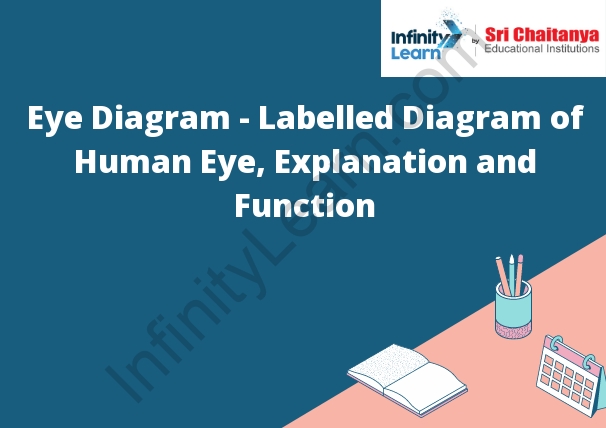Table of Contents
Human Eye – An Introduction
The human eye is an organ that allows humans to see. The eye is the organ of sight. It is the most complex organ in the body. The eye has many parts that work together to allow you to see. Eye Diagram – Labelled Diagram of Human Eye.
The eye is made up of the following parts:
- The cornea is the clear part of the eye that you see through.
- The pupil is the black part of the eye. It is the opening in the center of the cornea. The pupil is made up of muscle fibers that can change size. This is what makes your eyes adjust to different amounts of light.
- The iris is the colored part of the eye around the pupil. The iris is made up of muscle fibers that can change the size of the pupil.
- The lens is behind the pupil. The lens is a clear, round, curved piece of tissue that helps focus light on the back of the eye.
- The retina is the back of the eye. The retina is made up of nerve cells that sense light. When light hits the retina, it sends a message to the brain.
- The macula is a small, sensitive area in the center of the retina. The macula is responsible for central vision.
- The optic nerve is a nerve that carries the messages from the retina to the brain.

Labeled Diagram of Human Eye
The human eye is a complex organ that is responsible for vision. The eye is made up of several parts, including the cornea, pupil, iris, lens, and retina. The cornea is the clear front part of the eye that covers the iris and pupil. The pupil is the black part of the eye that lets in light. The iris is the colored part of the eye that surrounds the pupil. The lens is the clear part of the eye that helps to focus light on the retina. The retina is the thin layer of cells at the back of the eye that detect light and images. Eye Diagram – Labelled Diagram .
Operation of an Human Eye
The human eye is a complex organ that is responsible for vision. The cornea is the clear, dome-shaped outermost layer of the eye. The pupil is the black part of the eye that gets smaller or larger depending on the amount of light entering the eye. The iris is the colored part of the eye that surrounds the pupil. The lens is located behind the iris and helps to focus light on the retina. The retina is a thin, light-sensitive layer of tissue that lines the back of the eye. Function of the Human Eye
The human eye is one of the most complex and intricate organs in the human body. It has many different functions, including, but not limited to, the ability to see, to protect the body from injury, and to regulate the body’s internal clock.
The cornea is the clear, curved outermost layer that covers the iris and the pupil. The iris is the colored part of the eye that surrounds the pupil. The pupil is the black part of the eye that lets in light. The lens is a clear, round structure that sits behind the pupil and helps to focus light on the retina.
The retina is a thin, delicate layer of cells at the back of the eye that converts light into electrical signals that the brain interprets as images. The optic nerve is a bundle of nerve fibers that carries these signals from the retina to the brain.
The retina contains millions of light-sensitive cells called photoreceptors. These cells convert the light into electrical signals that the brain interprets as images. The human eye can see a wide range of colors because it contains three types of photoreceptors: blue
Function of Lens in the Human Eye
The lens is a transparent, biconvex structure that is located in the anterior segment of the eye. It is responsible for bending and focusing light onto the retina.
Eye Diagram – Labelled Diagram of Human Eye.







